By Sean Fagan
..
.
.
“We saw the Great Spirit work in almost everything – sun, moon, trees, wind and mountains" ~ Walking Buffalo
.
.
How To Create an Outdoor Masterpiece (well, sort of)
One of the great strengths of bushcraft is that it enables the individual to safely live outdoors in relative comfort.
In effect, bushcraft can embolden an individual to explore wild places at a deeper level.
Photography, artwork, craftwork and writing are some of the ways of deepening our understanding of nature.
It really doesn’t matter how good the art is – what is important is that outdoor artist is interpreting nature and the great outdoors through art.
.
BUSHCRAFT & ART
There would seem to be a common, intrinsic need of humankind to make sense of the world through a creative lens.
One very compelling reason why you should let loose your artistic side is that it can, ironically, fuel your desire to practise bushcraft in wild & remote places (where there is often outstanding beauty to fuel artistic inspiration).
Bill Mason, a renowned wilderness artist & documentary-maker, was a perfect example of an artist that would happily lose himself in the embrace of nature.
It was his exceptional canoeing, camping & navigational skills (i.e. bushcraft skills) that enabled him to solo-travel throughout the northern woods of his beloved Canada for the purpose of capturing on canvass and film; compelling scenes of nature.
In effect, Bill's bushcraft skills and knowledge was supporting his artistic nature, and vice versa.
.WE ARE ALL ARTISTS
(AND PLEASE - DON’T YOU FORGET IT)
Throughout the years I've come across many people that believe that they have little or no artistic skills of merit even though many of them have never tried their hand at creative endeavours. A part of me disagrees with this attitude.
One objective of pursing outdoor creative projects is not to produce high quality art but to allow the practitioner to enjoy the creative process – to deepen their perception & enjoyment of nature through art.
So what is the right attitude to bring to the outdoors as regards creativity?
Children are a great example of the right attitude. Whenever I’ve brought groups of children outdoors to participate in an artistic task - they reveled at the opportunity.
They had a great, uninhibited attitude. Crucially, they sharpened their perception of nature through art – which is the overall point (and had great fun doing so).
.
Consider the words of writer, Kevin Ashton, about creativity:
.
“The creativity myth implies that few people can be creative, that any successful creator will experience dramatic flashes of insight, and that creating is more like magic than work. A rare few have what it takes, and for the them it comes easy. Anybody else’s creative efforts are doomed”.
.
Throw away the burden of creating a masterpiece when putting pen or paint to paper.
Just enjoy yourself and see what happens.
Without further ado...9 CREATIVE PURSUITS FOR THE OUTDOORS:
I've partially chosen the following artistic pursuits based on how practical they are to do while outdoors. They require minimal or no equipment and are imminently portable.
.
- Photography
- Sketching
- Creative Writing
- Charcoal Drawing
- Wood Carving
- Painting
- Bushcraft Journal
- Music & Singing
- Sound Recording
.
.
-
PHOTOGRAPHY
.
“Photography can teach you to improve your awareness level”
Ansel Adams
.
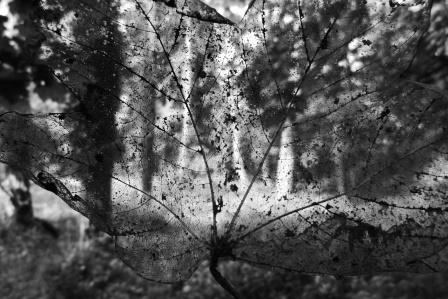
Anybody can create artistic photographs. View of a sunlit wood through a decomposed sycamore leaf (Photo: Sean Fagan).
A good bridge or DSLR camera will increase your options, but there are great compact camera options – my personal preference is for Panasonic cameras (with Leica lens) for versatility, affordability, ease of use and photographic quality. I have a Panasonic bridge camera (model no. FZ62) and a Panasonic compact camera - both with Leica lens.
Realistically, I don’t always bring my larger, weightier bridge camera but I always bring my compact camera (usually on my person, in a jacket pocket). There is usually something interesting to photograph, such as a track, a plant, a scenic landscape. Carrying a compact camera is nearly always useful.
The scope for outdoor photography is huge. From photographing the miniscule to landscape shots, from day or night shots – once you get a grasp of the technical basics the sky is the limit. As regards technical advice: if you are a beginner to photography I would advise that you first get to grips with three basic, technical aspects of your camera: ISO, shutter speed and aperture. Once this technical triad is mastered, you'll generally have the ability to obtain a diverse range of great shots in a variety of outdoor conditions.
You don’t need a huge amount of technical competency in order to produce interesting shots – despite what a lot of experts claim.
What is just as important as technical competence is a creative desire to experiment - to play around with different subject matters, compositions, perspectives, light conditions etc.
Whatever camera you may chose, or whatever outdoor subject matter that may pique your interest – have fun!
- Understanding ISO
- Understanding Aperture
- Understanding Shutter Speed
- Trust your Unique View of the World (Gary Hart article on developing your own creativity)
.
.-
SKETCHING
I recommend 0.1mm fine pens (Steadler pens are very good) – 0.1mm pens are great for very fine detail. If using pencils, take two pencils – a H type pencil (light shade) and a B type pencil (dark shade). Pen and pencil can also be used together.
A good quality hardback sketch pad is advised, complete with waterproof case/bag, and an eraser - you can sharpen your pencils with your bushcraft knife.
Like photography, the scope for sketching is limitless. Don’t worry about correct proportions and detailed accuracy in your sketches.
The idea of sketching outdoors is to slow down and savour details - and to improve your overall observation skills. Competency is not really important.
Engaging your senses and observing aspects of nature at a deeper level is where the fun is.
Botany, tracks, landscapes & wildlife are just the tip of the iceberg as regards great subject matter for outdoor sketching.
Sketching is also great for the design stage in bushcraft construction projects such as shelter-making, tables, bush-chairs and traps.
.
“I keep drawing the trees, the rocks, the river, I'm still learning how to see them; I'm still discovering how to render their forms. I will spend a lifetime doing that. Maybe someday I'll get it right.” - Alan Lee..
.
.
-
CREATIVE WRITING
If you are a first-time writer it's good advice to gently ease yourself into this art form. Don’t worry about the specifics of grammar, spelling and composition – just enjoy yourself.
I strongly advise that you write about whatever aspect of nature that catches your interest, anything - whether that be a flower, an insect, a mountain, the sound of the wind...
Delve deeply into the well of nature.
Composing verse or prose on a Dictaphone/Smartphone/Tablet is a good alternative to hand-writing. For long trips, most dictaphones last a long time due to a long battery life. Dictaphones also make a very convenient substitute for a bushcraft journal.
.
-
CHARCOAL DRAWING
Charcoal drawing is a versatile and quick means of creating ether detailed or abstract monochrome images of nature. Charcoal is outstanding for shading and silhouette drawings.
It's also very light – making it very portable.
Willow twigs are a good choice for charcoal (just in case you want to make your own charcoal).
Charcoal from the remains of a campfire is also good.
What makes charcoal great is its versatility and the quickness with which it can be used to create complete drawings.
It's ideal for beginner and seasoned artists alike.
Also, charcoal is great for camouflaging your face and hands when observing/photographing wildlife. A bonus of using charcoal for camouflage is that it can easily be removed which is not always the case with commercial brands of face camouflage. Do not put charcoal near the eyes and be mindful of charcoal trickling down from the forehead to the eyes when your are perspiring or its raining (a hat is a better option).
-
CREATIVE CARVING PROJECTS
Artistic carving projects can really broaden and improve your overall knife-handling skills and safety, as intricate projects often demand greater knife control and more attention to detail.
By stretching your carving skills you will get to know the unique properties of different woods a lot better. Carving is also a great, relaxing, evening-time activity (provided you have sufficient illumination!).
You don't have to be too grand in your aspirations as regards creative carving, you can for example, embellish a wooden spoon with extra detail on the handle.
Below, is a short video showing 8 different knife grips (by master blade-maker, Ben Orford). Possessing a wide range of knife carving grips equals more carving versatility.
.

Bushcraft carving is not necessarily just about making functional outdoor items, such as wooden spoons. It can also be an opportunity to flex your artistic inclinations (photo: Wikimedia commons).
-
PAINTING
Acrylics, oils & watercolours are all options. As regards the practicality of outdoor painting on extended trips – it’s possible to buy (or make) a collapsible frame to hold canvases (the finished canvases can be rolled and placed into a sturdy art tube for compact, safe and waterproof storage).
Canvas is generally better than sketch pads for painting, as oils or acrylics can cause sketch pad paper to wrinkle badly.
If dissatisfied with a painting simply paint over the canvas painting with white paint, allow to dry and start over again (make sure to bring plenty of white paint).
Again, have fun (and don't be afraid to make a bit of mess).
.
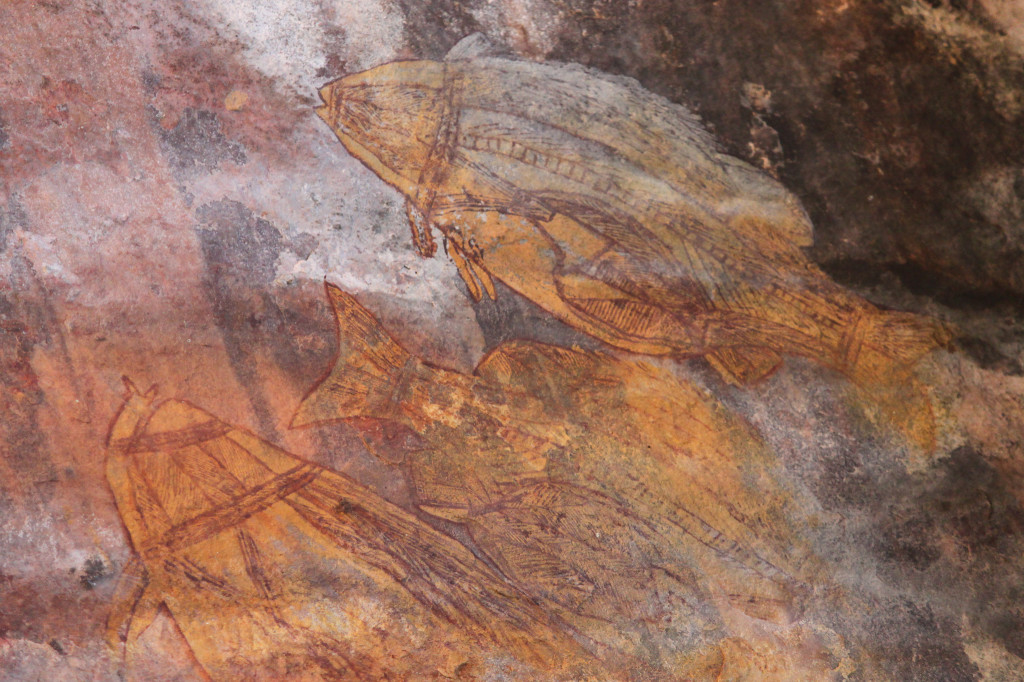
A great example of outdoor painting. Ancient aboriginal cave art of fish, from Kakadu National Park, North Australia (photo: Wikimedia Commons).
.
.
-
BUSHCRAFT JOURNAL
Why not add an artistic dimension to your bushcraft journal?
Instead of transcribing only bushcraft related facts in your journal why not take some time out to add detailed sketches to your journal or flesh out your written entries with more vivid descriptions. You are limited by your imagination on this one. You can, for example, do detailed sketches of animal tracks (a great way for familiarising yourself with the minutiae of tracks).
.

Including sketches into your bushcraft journal can add an enjoyable, artistic dimension to journal entries (Photo: Sean Fagan).
-
MUSICAL INSTRUMENT & SINGING
Any musical instrument that is light, robust and compact is ideal for bushcraft and camping excursions (e.g. harmonica and tin whistle are two options).
Singing is as old as humanity itself. Even today, tribal people that live a semi-hunting and gathering lifestyle enjoy singing - from the San Bushmen of Southern Africa to the Aboriginal people of Australia - singing is a means of entertainment and is often part of ceremonial rituals for the relaying of important cultural knowledge.
Singing was most likely part of the heritage of our own hunting and gathering ancestors. If they did it – why can’t you
.
-
SOUND RECORDING
The world of nature is acoustically diverse. Bird calls and songs, mammal vocalisation, the wind rusting through woodland or long grass, the sound of a mountain stream after heavy rain are some of the sounds that add a fascinating and diverse acoustic dimension to the outdoors.
Bird Calls & Songs:
Birds are a great starting point for sound recording partly because of their widespread, common occurrence and the distinctiveness of each bird species calls and songs. In addition, many bird species have different, interesting types of vocalisation: songs, contact, alarms and social calls.
The best time of the year (in temperate countries) to record bird song is at dawn during late spring and early summer when male birds are most vigorous in their territorial singing. May is a particularly good month to listen out for the incredible dawn chorus of birds.
If you have never awoken to a dawn chorus in a native woodland you are missing something special.
.
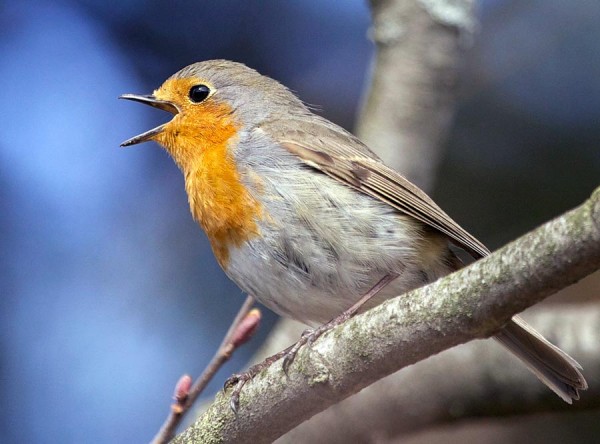
Often, common bird species of Ireland & Britain, such as the robin, are stunning songsters - and well worth recording (Photo: wikimedia commons)
.
.
Placing emphasis on the rich variety of sounds that are found in nature can be surprisingly rewarding and interesting. For fun, consider sound recording during night-time.
“The three great elemental sounds in nature are the sound of rain, the sound of wind in a primeval wood, and the sound of the ocean on a beach” ~ Henry Beston
SUMMARY
.
This is not a comprehensive list of outdoor creative pursuits by any means. A little research will reveal many more creative options.
If you do take up a creative pursuit while outdoors – enjoy yourself above all else.
As always, be safe and aware of the risks that are associated with venturing into wild places.
My general advice is – don’t necessarily allow your exploration of nature to cease at bushcraft. Allow yourself, if compelled to do so, to flourish in other avenues.
Bushcraft provides those rare opportunities to explore the natural world off the beaten track, away from the hustle and bustle of modern life and all its distractions.
There is a certain type of joy to surrendering yourself to a wild place through bushcraft and whatever form of artistic expression that pleases you.
They are very much complimentary ways of perceiving in wild places.
.
.
“Many travellers contend themselves with what they may chance to see from car-windows, clinging to the battered highways like drowning sailors to a life raft”. ~ John Muir
.
. . Have safe & grand adventures, Pioneer Bushcraft..
.
Related articles on this website:
- Nature: A Bushcraft Perspective
- Learn 4 Wilderness Safety Awareness Tips
- 7 Great Reasons to Camp in Winter
- Fascinating Invertebrates
RESOURCES:
PREHISTORIC ART
The 30,000 - 32,000 year old prehistoric cave paintings of southern France are beyond impressive. It’s little wonder that some of these caves were awarded a UNESCO World Heritage Site status - not just because of the exceptional age, fascinating story-telling and well-preserved state but also because of their exceptional artistic merit (they are hauntingly beautiful). A 2010 documentary, Cave of Forgotten Dreams, made by great director, Werner Herzog, explores the famous cave paintings of Chaveut. Highly recommended.
- Excellent National Geographic article about cave art: First Artists.
THE ANCIENT ART OF NEWGRANGE
It’s hard to believe that a 5,300 year old, Neolithic burial mound of such grand dimensions and complexity even exists in Ireland. Older than the pyramids and Stonehenge, Newgrange was the architectural equivalent of a great cathedral for its time.
Newgrange is amongst other functions, an astronomical marker for the winter solstice (December 21st). If you have the time and inclination I highly recommend you consider visiting New Grange (visit early in the morning, if you can – before the late morning/afternoon tourist rush).
Newgrange is also adorned with exceptional, symbolic stone etchings.
.
EXCEPTIONAL OUTDOOR PHOTOGRAPHY OF GARY HART
Gary Hart is a photographer that specialises in outdoor photography and delivering photography workshops in some of the most beautiful locations in North America. His website is full of easy-to-understand technical and artistic advice for the budding and seasoned photographer. Plus, he is a very good writer. His articles are a joy to read.
.THE WILDERNESS ART OF BILL MASON
Many people who practise bushcraft, and many outdoor enthusiasts, have a special place in their hearts for Bill Mason - for good reason - his brilliant, semi-autobiographical documentary, Waterwalker is a well-crafted exploration of what makes a great outdoor artist tick. Inspiring stuff.
- Bill Mason's semi-autobiographical documentary: Waterwalker.
.
.
“I can’t remember a time when I felt lonely out here (in the wilderness). When I’m alone - filming and painting become very necessary for me"
Bill Mason
.
.
“If I had to live my life over again, I would have made a rule to read some poetry and listen to some music at least once every week”
Charles Darwin
.
...
PIONEER BUSHCRAFT DISCLAIMER
.
The aim of this article is to provide advice that will enhance the quality of your time, and well-being, when outdoors.
Pioneer Bushcraft does not take any responsibility for the misapplication of advice in this article.
The advice in this article is very much an adjunct to, and not a substitute for, high-quality bushcraft training (including outdoor medical training), relevant research and experience, trustworthy local knowledge, a thorough risk assessments and all other health & safety considerations specific and pertinent to your outdoor excursions.
Please – when outdoors, take responsibility for your well being seriously.
It can make all the difference between a great or bad outdoor experience.
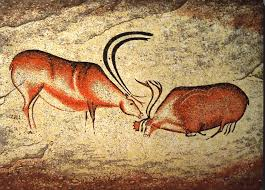

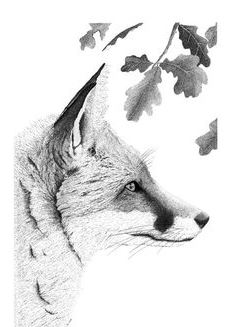
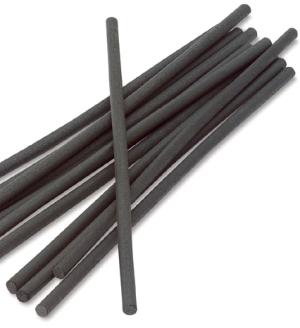
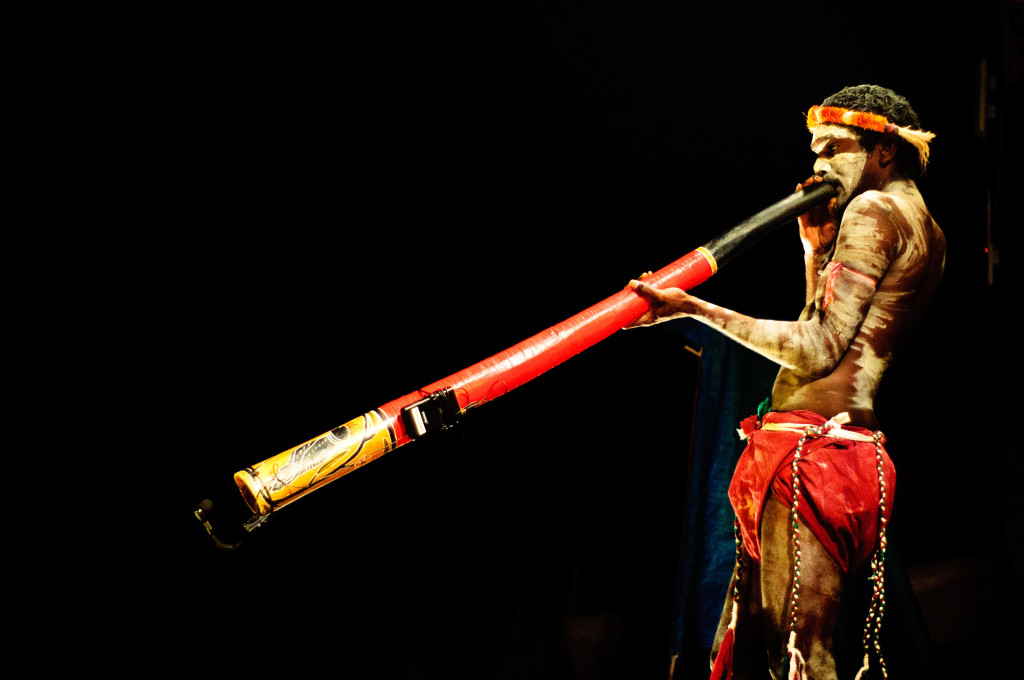

Recent Comments